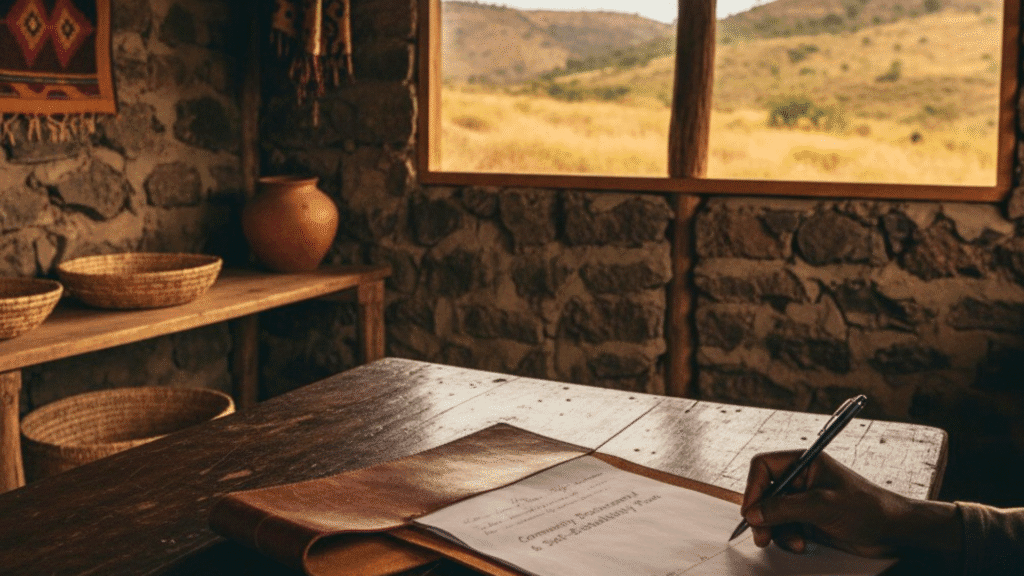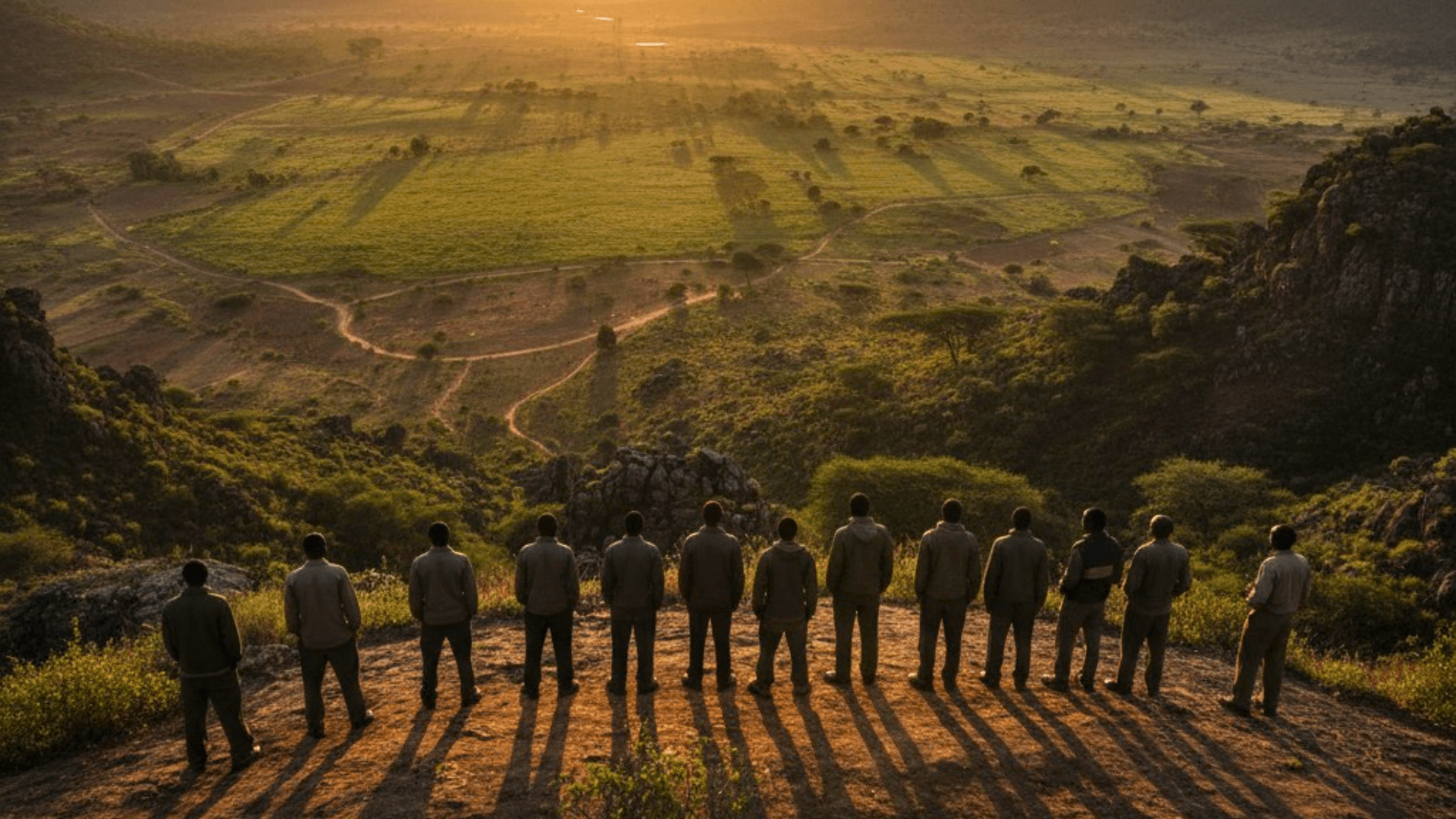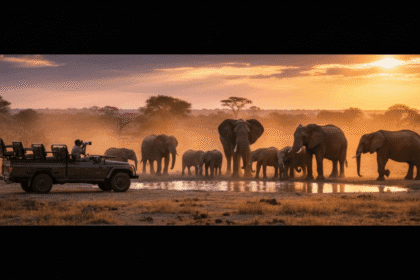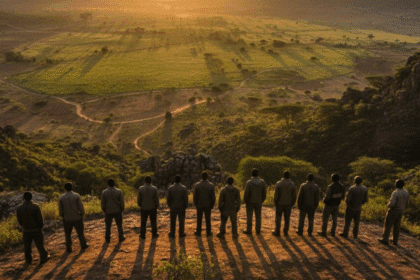The Ecotourism Bet
By Brian Ochieng Akoko, Reporter | Nakuru City – Kenya.
The threat is existential. It is not an exaggeration.A vast, life-filled expanse in Ethiopia faces collapse. It is the nation’s largest community conservation area. This area is a critical habitat. It is home to unique and endangered wildlife.
It also sustains thousands of local people.The crisis arrived when major US funding was withdrawn. The financial lifeline was cut. The resulting gap is immense. It threatens years of painstaking conservation work.
It puts the entire ecosystem at risk. Local leaders and conservationists refuse to surrender. They are fighting for survival. Their strategy is a major pivot. It is a gamble on the future.
They are shifting focus to sustainable ecotourism. They are also investing in homegrown conservation leadership. The hope is to transform a dependency model into a self-sustaining success. The stakes for Ethiopia’s natural heritage have never been higher.
The Immediate Shock of the Aid Cut
The impact of the funding cut was instant. It was severe. Security patrols were immediately reduced. Anti-poaching efforts slowed down dramatically.Infrastructure maintenance ground to a halt.
This included ranger outposts and vital communication networks. The community’s resources were stretched thin. They had relied heavily on external support. This area is not just a patch of land.
It is a model for community-led conservation in Africa.The withdrawal of support sends a difficult message. It suggests that African conservation is reliant on foreign budgets. This reliance is a vulnerability. The current crisis has exposed it fully.
The area protects key species. These species are vital to global biodiversity. Losing this site would be a tragedy. It would be an environmental disaster with profound consequences.
Building Conservation Tourism from the Ground Up
The new strategy centers on ecotourism. It is a challenging but necessary path. Ecotourism provides a direct, sustainable revenue stream. This revenue can replace the lost foreign aid. The goal is not mass tourism.
The goal is specialized, high-value, low-impact visits. These visits focus on the unique wildlife and cultural experiences. They offer deep engagement. A key challenge is infrastructure development.
The area needs quality lodges and reliable transport. It must also ensure that local communities are the main beneficiaries. This is crucial for long-term buy-in. The community must see a direct link.
The link is between conservation and economic reward. This model is proven elsewhere in Africa. Destinations like Rwanda’s gorilla tracking demonstrate its power. Rwanda has successfully balanced conservation with high-end tourism.
This model is now the blueprint. The people here are embracing this shift. They understand that the success of the wildlife is tied to their own prosperity. The shift is hard work. It requires new skills. It needs significant local investment.
Local Leaders and the Leadership Programme
Another pillar of the revival plan is leadership development. It is a long-term investment. The local communities need to own the conservation narrative. They need to lead the efforts.
This is where programs like the Conservation Leadership Programme (CLP) become vital. These programs identify and train local candidates. They focus on management, science, and policy.
Ethiopian candidates have been selected for this prestigious program. This provides a surge of expertise. These new leaders are being trained in cutting-edge techniques. They are learning sustainable management practices.
They represent the future of conservation in Ethiopia. They are not expatriate staff. They are local experts. Their training ensures continuity. It makes the conservation effort resilient to external shocks.
The leadership training is comprehensive. It covers finance, community engagement, and ecological science. This empowerment is critical. It transforms community members from passive beneficiaries into active stewards.
The success of the area will now depend on these individuals. They carry a heavy burden of responsibility. The goal is to create a generation of Ethiopian conservationists. They will be world-class in their approach.
Stability and the Green Economy

The conservation struggle is not isolated. It is intertwined with regional stability. The Horn of Africa is a tense region. Geopolitical crises, like the one concerning Ethiopia’s sea access deal, dominate the headlines.
In times of instability, environmental protection often suffers. Resources are diverted. Focus is lost. This conservation area represents a stable, productive vision for Ethiopia. It is a green economic hub.
Developing ecotourism provides a non-conflict-based economic pathway. It diversifies national revenue streams. It is a form of soft power. It shows a commitment to global environmental standards.
The government recognizes the strategic importance of this area. It can be a beacon of sustainable development. This is a stark contrast to the narratives of conflict. It offers a message of hope and cooperation.
The international community watches closely. The failure of this project could set a dangerous precedent. Its success would prove the viability of community-led, self-funded conservation. It would be a powerful global message.
The Rangers and the Community
Behind the policy and the finance are human stories. They are stories of incredible dedication. Rangers in the area continue their patrols. They do so despite delayed salaries and scarce resources. They view their work as a patriotic duty.
It is a defense of their ancestral land. One young ranger, a recent graduate of the local training program, spoke passionately.“ This land is our classroom and our heritage,“ he said. „The animals are our brothers. We cannot let them vanish because of a budget cut.“
His words resonate across the community. It is a shared sense of ownership. Local women are organizing craft cooperatives. They are preparing for the influx of tourists. They are creating high-quality, sustainable souvenirs.
This directly ties their culture to the new economy. These cooperatives ensure that tourist money stays local. It builds generational wealth. This is the definition of true community development. It is economic growth with a cultural heart.
They are cleaning up trails. They are training as local guides. They are preparing their homes for homestay programs. The transformation is visible. A spirit of entrepreneurial energy has replaced dependency.
Investment and Vision
The road to full financial independence is long. It is fraught with obstacles. The area requires significant upfront investment. This is needed for the ecotourism infrastructure. Private investors are being courted.
They are being offered sustainable partnership models. The vision is clear. The area aims to be the premier ecotourism destination in the Horn of Africa. It will offer unique safari experiences. It will showcase Ethiopia’s rich cultural history alongside its wildlife.
The conservation plan has been revised. It now includes detailed financial modeling for self-sufficiency. This detailed planning is crucial. It gives investors and donors confidence in the future.
The plan emphasizes climate resilience. It incorporates sustainable water management and anti-desertification measures. This is a holistic approach. It protects the ecosystem and supports the people.
The fight is far from over. But the community has found its path forward. It is a path paved by local hands. It is powered by a deep commitment to the land. The future of this green heart of Ethiopia now rests on its people.
It is a story of resilience and self-determination. The world should watch this effort. It is a model for how conservation can overcome external shocks. The community is proving a vital point.
They are showing that they can lead their own destiny. The hope is that their success will inspire other communities across Africa. It will show them the power of a green economy. The next few years are critical.
They will define the success or failure of this great conservation gamble. The people stand united. Their resolve is the final barrier against extinction. They are building a sustainable future.
They are protecting a priceless heritage. This is a story of hope in a challenging geopolitical landscape. It is a testament to the human spirit.





Daj svoj stav!
Još nema komentara. Napiši prvi.